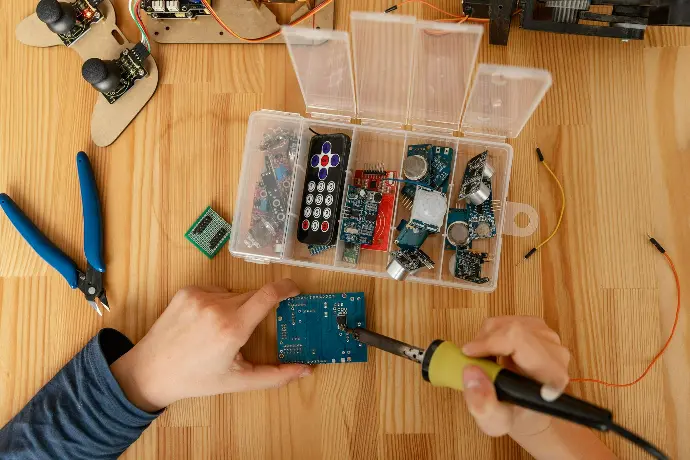What is an inquiry learning strategy?
A survey learning strategy is an educational approach based on students' natural curiosity and desire to discover and learn by asking questions, research and analysis. This type of learning revolves around engaging students in the educational process by exploring concepts and problems themselves, rather than directly providing them with information.
خصائص استراتيجية التعلم بالاستقصاء:

1. Curiosity and questioning:
- Encourages students to ask questions and enquire about phenomena and concepts.
- o يعتبر الفضول هو المحرك الرئيسي لعملية التعلم.

2. Research and discovery:
- Students rely on research and inquiry to gather information and data.
- o يستخدمون مصادر متنوعة مثل الكتب، الإنترنت، التجارب، والمقابلات.

3. Critical thinking and analysis:
- Students analyze the information and data they have collected.
- They use critical thinking to assess the validity of information and the conclusion of results.

4. Practical Application:
- Learning by inquiry involves applying knowledge gained to real problems or realistic scenarios.
- Encourages students to conduct experiments and practical projects.
Steps to implement the inquiry's learning strategy:
1. Identifying the question or problem:
- The lesson begins with asking an open question or a problem that needs to be solved.
- The question or problem should be stimulating and curious in students.
5. Experimentation and testing:
- Students conduct experiments to test their hypotheses.
- They learn by trying, mistaking, recording notes and data.
2. Information Collection:
- Encourages students to research and gather information about the question or problem.
- A variety of sources such as books, articles, Internet, and interviews can be used.
6. Conclusion of findings:
- Students draw results based on their experiences and analysis of information.
- They discuss their findings and provide evidenced explanations.
3. Information Analysis:
- Students analyze the information they have gathered and draw conclusions.
- Tools such as mental maps, tables, and charts can be used.
7. Communication and participation:
- Students present their findings and conclusions to their colleagues.
- This can be done through presentations, written reports, or group discussions.
4. Development of hypotheses:
- Students are encouraged to make hypotheses based on their analysis of information.
- These hypotheses are tested through experiments or additional research.

Benefits of the inquiry's learning strategy:
- Promoting deep understanding: Helps students understand concepts more deeply through personal discovery and direct interaction with information.
- Developing critical thinking skills: Enhances students' ability to analyze, evaluate and conclude.
- Stimulate Curiosity: Encourages students to ask questions and explore ideas effectively.
- Developing research skills: Helps students learn how to search for information and assess different sources.
- Increased participation: Makes learning more interactive and encourages students to participate effectively in the educational process.
Examples of the application of the inquiry learning strategy in lessons:
Application of the inquiry strategy to the "Wastewater" lesson
The following are detailed steps to implement this strategy:
1. Identifying the question or problem:
- Pivotal question: What is wastewater and how can it be treated and reused?
- The objectives of the lesson:
- To Clarify the concept of wastewater.
- Identify wastewater sources.
- Study wastewater treatment methods.
- Discuss the importance of reuse of treated water.
2. Information Collection:
- Activity 1: Research and compilation
- Divide students into small groups.
- Ask each group to search for information about a particular aspect of the subject, such as:
- Definition of wastewater.
- Wastewater sources (industrial, household, agricultural).
- Wastewater treatment methods (physical, chemical, biological).
- Uses of treated water.
- They can use textbooks, articles, the Internet, and other sources.
3. Information Analysis::
- • Activity II: Data analysis
- Ask each group to analyze the information you have collected.
- Comparison tables or mental maps can be used to illustrate the differences between different wastewater treatment methods.
- Discuss with them how to evaluate the effectiveness of each treatment method.
4. Development of hypotheses::
- • Activity III: Hypotheses and debate
- Encourage students to make hypotheses based on the information they have gathered. Like:
- "Biological wastewater treatment is more effective than chemical methods."
- "Reuse of treated water can reduce clean water consumption."
- Discuss these hypotheses with students to determine their validity and how they can be tested.
5. Experimentation and testing: :
- • Activity 4: Simple experience
- A simple experiment can be carried out in the laboratory (if possible) to represent one of the wastewater treatment methods.
- For example, a simple filter (such as sand and coal) can be used to purify contaminated water.
- Let students observe changes and record their feedback and results.
6. Conclusion of findings:
- Activity V: Drawing conclusions
- Ask each group to provide conclusions based on the information you have collected and the experiences you have conducted.
- Conclusions should include strengths and weaknesses in each treatment method, and the importance of reusing treated water.
7. Communication and participation: :
- • Activity VI: Presentation
- Let each group present its results in front of the class. Presentations, posters, or interactive models can be used.
- Encourage other students to ask questions and participate in the discussion.
Practical examples:
Example 1: Search for wastewater sources
- Activity: Groups can look for real examples of the community's wastewater sources (such as a local factory, or household wastewater).
- Discussion: How to reduce pollution from these sources can be discussed.
Example 2: Visit the water treatment plant
- Activity: Arranging a field visit to the local wastewater treatment plant (if possible).
- Discussion: After the visit, students can discuss what they learned about the process and equipment used.
The benefits of applying the inquiry strategy in this lesson:
- Promoting deep understanding: Helps students understand the complex processes of wastewater treatment in more detail.
- Developing research skills: Students learn how to search for information and assess its sources.
- Encouraging critical thinking: Motivates students to analyze information and make hypotheses and test them.
- Increased engagement: Makes learning more interactive and interesting, increasing students' participation in the lesson
Concluding:
The inquiry learning strategy promotes active learning, critical thinking and independent research in students. Through this strategy, students learn how to ask questions, collect, and analyze information, and draw conclusions in an interactive and effective manner, enhancing their deep understanding of concepts and motivating them to continuously learn.